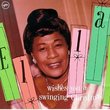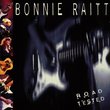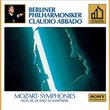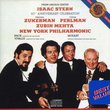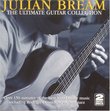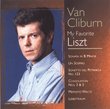| All Artists: Aaron Copland, Helmuth Kolbe, Leonard Bernstein, London Symphony Orchestra, New York Philharmonic, E. Power Biggs Title: The Copland Collection: Early Orchestral Works, 1922-1935 Members Wishing: 1 Total Copies: 0 Label: Sony Original Release Date: 1/1/1991 Re-Release Date: 7/26/1991 Genre: Classical Styles: Opera & Classical Vocal, Forms & Genres, Concertos, Historical Periods, Modern, 20th, & 21st Century, Instruments, Keyboard, Symphonies Number of Discs: 2 SwapaCD Credits: 2 UPC: 074644723229 |
Search - Aaron Copland, Helmuth Kolbe, Leonard Bernstein :: The Copland Collection: Early Orchestral Works, 1922-1935
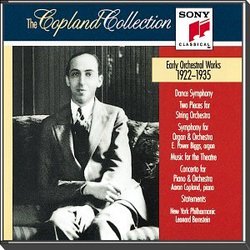 | Aaron Copland, Helmuth Kolbe, Leonard Bernstein The Copland Collection: Early Orchestral Works, 1922-1935 Genre: Classical
|
Larger Image |
CD DetailsSimilarly Requested CDs
|
CD ReviewsThe Copland you never knew Cory | Virginia | 12/09/2000 (4 out of 5 stars) "Normally the person just being introduced to Copland will think of him as the country boy from out west when they here such works as Appalachian Spring, Billy the Kid, and Rodeo. Well this CD of his early music was a big step for composer kind into the 20th century. Much of this music is not what we think of as his cowboy music. The Piano Concerto is very jazzy and catchy. His Theatre Music contains quite a bit of very city like jazz. This was jazz in the concert hall right before Gershwin became famous. Copland kinda broke the ice. The Organ Symphony is incredible. It's amazing how Copland creates such tension in some parts of the first and third movements with a little church sounding music on the organ. The second movie is happy but heavy. The third movement is the 'heaviest' of them all. You can bang your head to the final minute of this song with more passion then you can in Stravinsky's Rite of Spring. The String works are a nice suttle imaginary work that soothes the stress of the rest of the pieces. The Dance Symphony is a 'suite' of Copland's first ballet 'Grohg' which is pleasant music shall I say. It kinda foreshadows the westerness of Copland's music to be. The quality is very good on this CD. Most works are done with Bernstein conducting. Copland plays his own Piano Concerto. Who else could play the piece the way it was supposed to be? Not all of the songs on these CDs will be quick to stick in your mind. Some of the songs will be ones that you will need to take the time to listen to and think about opposed to listening to Hoe Down and having a theme right there that is blunt and obvious. I reccommend this CD to be purchased third if you are considering getting the whole set. Start with the middle years, then buy Tender Land, then Old American Songs and Emily Dickinson Songs, then the end years, then this one, and finally get the complete works for solo piano CD. After you get those main Copland, you can begin nitpicking your way through chamber works and the controversial (to some it's great, to others it's lame) Second Hurricane." Copland before he embraced his "populist" style - which does Discophage | France | 06/23/2009 (5 out of 5 stars) "I have no great interest in Copland's more popular - or should I write "populist"? - compositions and his "cowboy" style, initiated in 1936 with "El Salon Mexico". And I am one to regret that the lack of public success and the financial pressures of the depression led him not to pursue his more serious and demanding style.
The picture isn't as clear-cut, in fact. It would be comfortable for the mind to be able to think of Copland as the modernist turned populist - he would be neither the first nor the last. But in fact he never abandonned his more serious - or "severe" as he called it himself - style, returning to it regularly. It is in 1941 that he composed the masterful Piano Sonata, three years after Billy the Kid and a year before Rodeo. He returned again to his serious style in the 1957 Orchestral Variations (an orchestration of the Piano Variations from 1930), 1962 Connotations and 1967 Inscape, even flirting with the twelve-tone method in the Piano Quartet (1950) and the Piano Fantasy (1957). So this instalment of the Copland Collection devoted to the "Early Orchestral Works (1922-1935)" is a blessing for me. "Early" here means before the turn to popular/populist, but don't get it wrong: one, "serious" doesn't necessarily mean "difficult" or (as one Copland biographer once put it) "esoteric" - not by today's standards, and even by the standards set in the early decades of last century by Schoenberg, Varèse, Ives and the likes. Sure, there is some dissonance, some crashing and clashing chords, the music can be stark and imposing, or rambunctious and, in the Jazzy second movement of the Piano Concerto, close to Ivesian cacophony. But it is less cacophonous than Ives or Varèse, more immediately appealing melodically than Schoenberg, and even the starkness and severity are always at the service of great evocative and dramatic impact. Two, in fact, Copland then isn't always even "serious". The 1925 Music for Theatre and 1926 Piano Concerto are Copland's short-lived essays at creating an American vernacular style using Jazz - an attempt he subsequently considered an impasse, settling on another kind of vernacular which became his trademark. But the Jazzy movements in these compositions - the second of the Concerto's two, first, second and fourth from Music for Theatre - are saucy and rambunctious, sounding, in Music for Theatre, like circus music at times - Roy Harris even called it (laudatively) "whorehouse music", and you get some of that too in the 4th Statement, "Jingo". Pieces like the Dance Symphony (1922-25), the middle scherzo of the Organ Concerto (1924, later rewritten as the First Symphony), the fast sections of the "Short Symphony" (Symphony No. 2, 1933) and "Symphonic Ode" (1929) and many passages in Music for Theatre (1925) bridge the gap between the jazzy sauciness and the "severe": they teem with a spirit of Dance, they are sprightly, energetic and rhythmically angular and complex - so much so that the Short Symphony was deemed by Stokowski and Koussevitzky to be unplayable by their respective orchestra - Philadelphia and Boston, no less! - in the allotted rehearsal time, and got its US premiere only ten years after it was composed. In fact it is incredible how much the Symphony sounds like Stravinsky - but the Stravinsky of The Rakes Progress (1951) and Agon (1957). Dance Symphony, the reworking in symphonic form of music first conceived as a ballet inspired by Murnau's film "Nosferatu", is dynamic and springly and colorful in its outer movements, an essay in rhythm and color, again something like Stravinsky (in the almost abstract bouciness) yet (despite a few echoes from Firebird and Petrushka, strikingly so at the beginning of the 2nd movement) entirely personal. There are moments that are epically grandiose (the fanfares of the Piano Concerto's first movement, or the slow section of Symphonic Ode and the Organ Concerto's last movement, both rising to tremendous dramatic intensity), some nostalgic, pastoral and/or sentimental, announcing the Copland to be: in the first piece for String Orchestra, in the first movement of both the Organ and the Piano Concerto, in the first, middle and last movements of Music Theatre. Even when it is "severe" or `abstract" in its dance-like staccato jauntiness, the music is colorful, highly energetic and powerfully dramatic. These composer-played (Piano Concerto) and conducted recordings (only the Organ Concerto, with Bernstein at the helm, is "non-Copland") remain, still today, inescapable yardsticks and indispensable building blocks of any Copland collection. My comparison is mainly with Michael Tilson Thomas' recent recording of the Piano Concerto, Short Symphony and Symphonic Ode, Copland the Modernist. In the two latter, MTT has the interpretive edge, being slightly more driven, muscular and snappy in the Symphony's finale, swifter and more urgent in Ode against Copland's more solemn approach. One hears that the members of the LSO in 1965 and 1967 sometimes struggle with the notes; the Sanfranciscans have them in their stride. MTT is also more dreamingly brooding and spacious in the slow section. Bernstein conducting the Piano Concerto in 1964 with Copland at the piano has a few strangely pedestrian tempos (the returning fanfare at 4:18 in the first movement, the swinging section starting at 1:49 in the second) - and he certainly doesn't take his cue from the composer conducting that same work with Earl Wild at the piano three years earlier, Copland, Menotti: Piano Concertos, my favorite version among the three. But other than these limited spots, Bernstein's reading has all the required rambunctiousness, and Copland (the pianist)'s more biting accents and cruder sonics are more appropriate in the Jazzy second movement than Garrick Ohlsson/MTT's more generalized sonics. Indeed, sonics are where these recordings from the 1960s still strike: they are exceptionally vivid, giving much more presence and instrumental pungency than MTT's comparatively homogenized and somewhat muffled sound. So, small matters of interpretation notwithstanding, because these recordings have the authority of the composer and such stupendous sonics, they remain, still today, first choice. " |

 Track Listings (13) - Disc #1
Track Listings (13) - Disc #1
